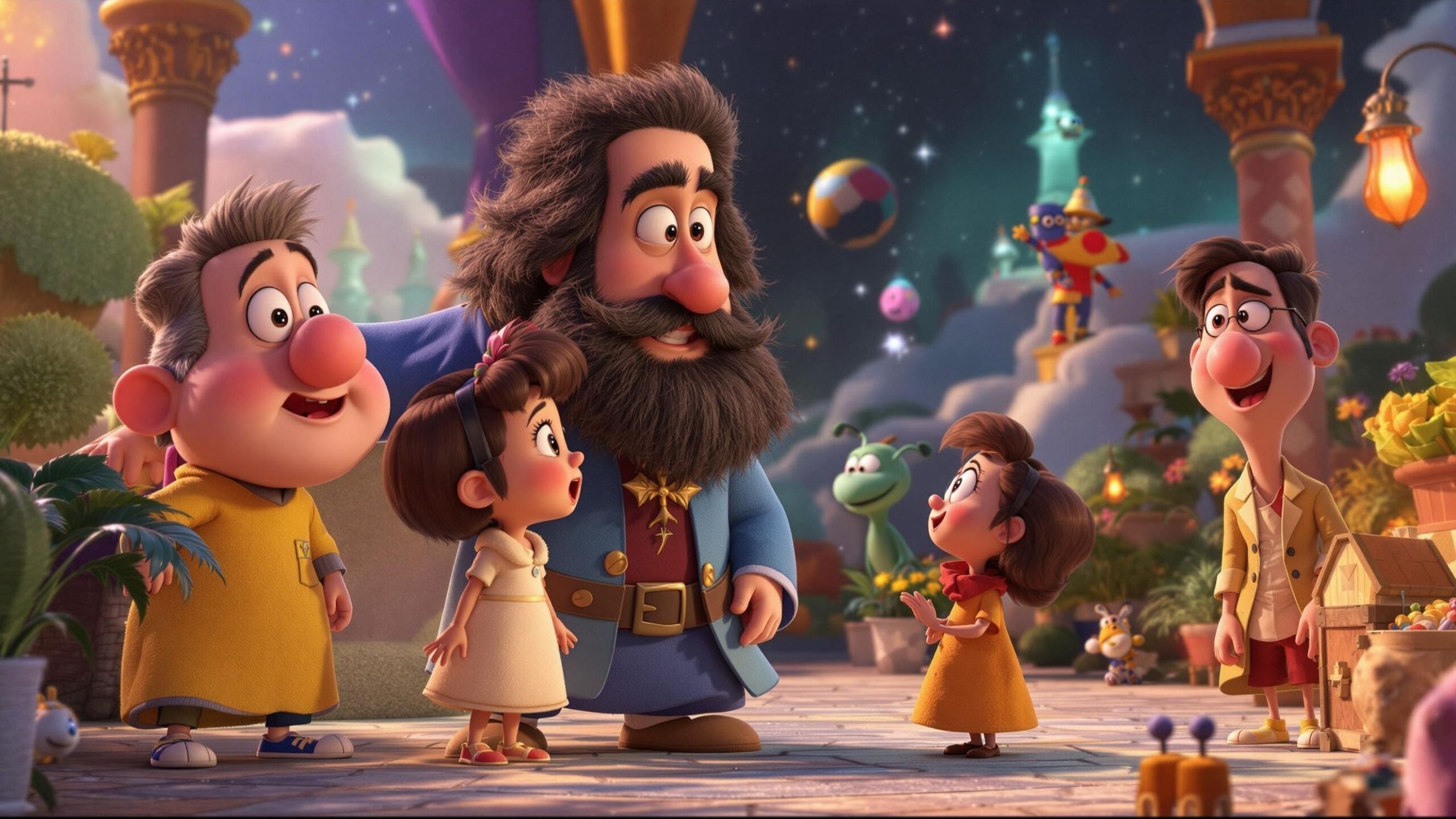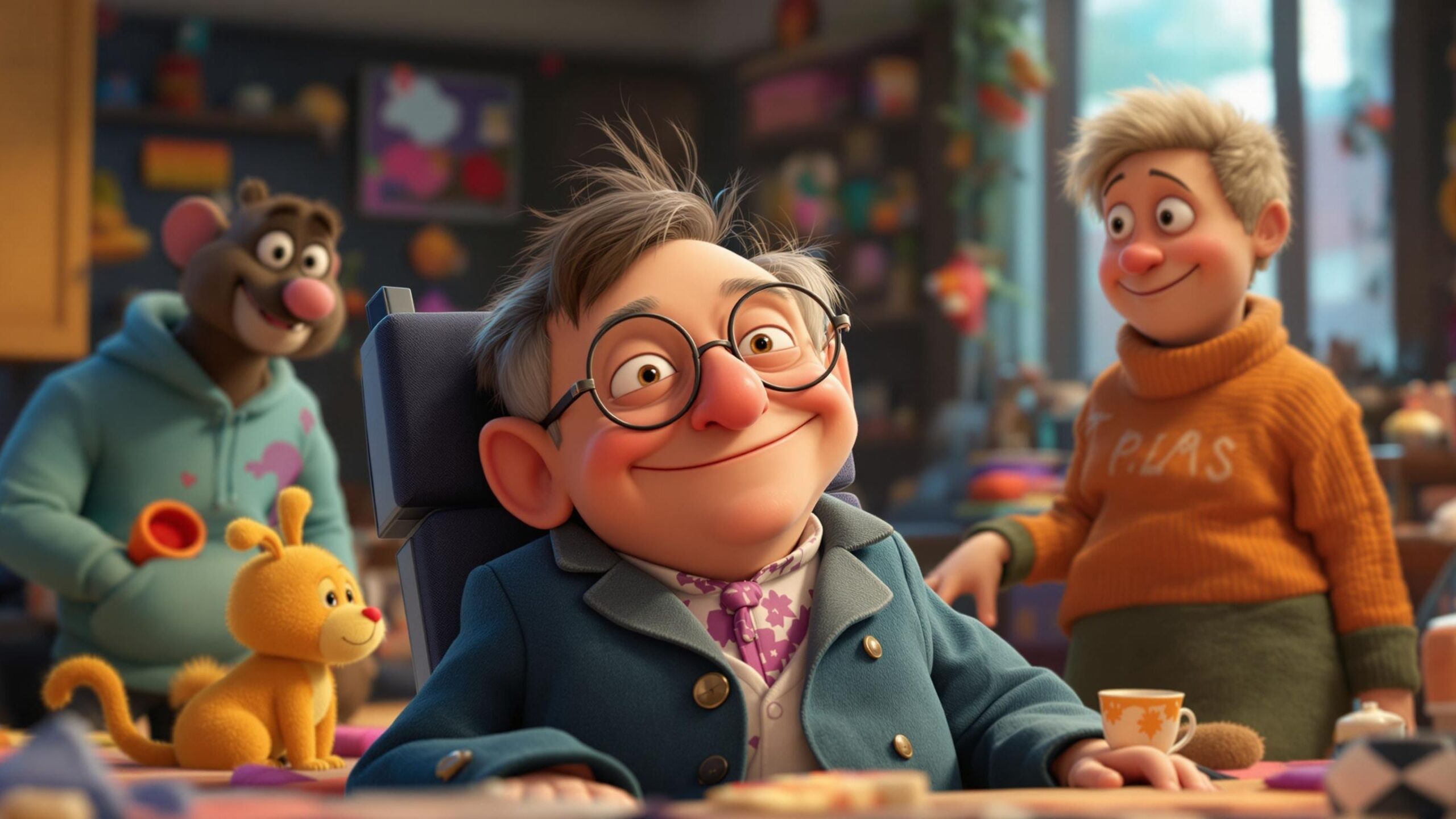A Rebel Born Under the Tuscan Sky
In the sun-drenched city of Pisa in 1564, a baby boy was born who would someday rattle the foundations of heaven and earth. Galileo Galilei came into the world at a time when people believed the universe was a perfect and unchanging masterpiece, painted by divine hands and centered entirely around Earth. But Galileo was never the kind of person to take things at face value. He would grow up to question everything—even the very order of the cosmos—and in doing so, ignite a revolution that forever changed the way we see our place in the universe. From a young age, Galileo showed a mind made for mischief and marvel. He was captivated by patterns, numbers, and movement. Whether it was the swinging of a lamp in a cathedral or the arc of a thrown rock, he saw the poetry of physics everywhere. While others saw the world as static and sacred, Galileo saw it as dynamic and explorable. The stars weren’t just lights in the sky. They were clues.
The Scholar Who Refused to Sit Still
Galileo first enrolled in the University of Pisa to study medicine, at the urging of his father. But the pulsing heartbeats and bloody surgeries of the medical world quickly lost his interest. He was far more entranced by the ticking of pendulums and the falling of objects. So, he shifted his studies to mathematics and natural philosophy, the Renaissance version of physics. It wasn’t long before he was teaching, inventing, and arguing circles around his colleagues.
He challenged Aristotle’s long-held beliefs that heavier objects fall faster than lighter ones, a concept no one dared question for centuries. According to legend, Galileo climbed to the top of the Leaning Tower of Pisa and dropped two spheres of different masses to prove they hit the ground simultaneously. Whether that’s historical fact or not doesn’t matter—what matters is that he was the first to seriously test and challenge ancient authority with the scientific method.
He wasn’t just a scholar. He was a shaker of worlds.
Eyes Toward the Heavens: Galileo Builds a Telescope
In 1609, Galileo caught wind of an invention sweeping across Europe—a tube of glass and lenses that could make distant objects appear closer. It was called a telescope, and Galileo immediately realized it could be more than just a toy for merchants or military scouts. He didn’t invent the telescope, but he improved it dramatically, grinding his own lenses and perfecting the design until he had a tool powerful enough to peer into the heavens themselves.
What he saw when he pointed it skyward would shock the world.
First, he looked at the Moon. People had long believed it was a smooth, flawless sphere—untouched by imperfection. But Galileo’s telescope revealed craters, mountains, and shadows. The Moon, it turned out, was just as scarred and rugged as Earth. Then he turned his gaze to Jupiter and saw something even more astonishing: four tiny “stars” moving around the planet. These were the Galilean moons—Io, Europa, Ganymede, and Callisto—and they proved that not everything in the cosmos revolved around Earth.
This was heresy in the eyes of many. But to Galileo, it was beautiful evidence that the universe was more complex—and more magnificent—than anyone had imagined.
The Starry Messenger and the Cosmic Challenge
Galileo didn’t keep his discoveries to himself. In 1610, he published Sidereus Nuncius (The Starry Messenger), a short but explosive book that shared his celestial findings with the world. He described the Moon’s jagged landscape, the satellites of Jupiter, and the countless stars in the Milky Way that no one had ever seen before. It was the first time in history that humanity had seen the cosmos with something other than the naked eye—and Galileo was its messenger.
But it wasn’t just the beauty of the stars that excited him. It was what they implied.
Galileo became a vocal supporter of the heliocentric theory—the idea that the Earth revolves around the Sun, not the other way around. This theory, first proposed by Copernicus, had been dismissed by the Church as dangerous nonsense. According to official doctrine, Earth was the center of the universe, and to suggest otherwise was to undermine the divine order of creation.
Galileo, however, couldn’t ignore what he saw through his telescope. The evidence was there. The orbits of Jupiter’s moons, the phases of Venus, the movements of the stars—it all pointed to a heliocentric system. And Galileo, fearless as ever, decided it was time to tell the truth.
Science vs. Dogma: The Clash with the Church
In 1616, the Catholic Church issued a warning: stop teaching that the Sun is the center of the universe. Galileo was told he could continue his studies as long as he treated heliocentrism as a hypothesis, not a fact . He agreed—at least publicly.
But Galileo wasn’t one to keep quiet . In 1632, he published Dialogue Concerning the Two Chief World Systems, a brilliant and biting book that compared the geocentric and heliocentric models. Written as a conversation between three characters, the book clearly favored the Copernican view. One of the characters, a slow-witted fellow named Simplicio, defended the Church’s geocentric view—and many readers, including Church officials, thought he was a thinly veiled caricature of the Pope.
That was the last straw.
Galileo was summoned to Rome and put on trial for heresy. His defense was simple: he believed in evidence. But in 1633, under threat of torture, Galileo was forced to recant his beliefs. According to legend, after being forced to state that Earth does not move, he muttered under his breath, “E pur si muove”—“And yet it moves.”
Whether he said it or not, the sentiment stuck.
Galileo was sentenced to house arrest for the remainder of his life. His books were banned. He was silenced. But he was not defeated.
A Universe Unchained
Though confined to his villa in Arcetri, Galileo continued his work. He explored the physics of motion, wrote about the laws of falling bodies, and even invented a rudimentary thermometer. His final work, Two New Sciences, laid the groundwork for classical mechanics and would later inspire Isaac Newton.
He also continued to peer at the stars, not with a telescope, but with the unstoppable vision of a mind set free.
Galileo died in 1642, blind and under house arrest—but the spark he ignited would blaze through the centuries. His ideas traveled further than he ever could have dreamed, shaping the foundations of modern physics, astronomy, and scientific thought.
The Church eventually admitted its mistake—though it took over 350 years to formally clear his name. In 1992, Pope John Paul II acknowledged that Galileo had been right. Science had finally caught up with the man who once mapped the stars from his window.
The Father of Modern Science
Galileo is often called the “father of modern science,” and for good reason. He championed observation over tradition, evidence over authority, and curiosity over compliance. He was one of the first to systematically use experiments to test hypotheses, a method that now forms the backbone of scientific inquiry.
But more than that, Galileo made science human. He asked daring questions, made bold assertions, and wasn’t afraid to laugh at the absurdity of rigid beliefs. He saw beauty in the stars, but he also saw injustice on Earth. He believed that truth was worth fighting for—even if it meant standing alone.
And stand alone he did. In an era where the cost of disagreement was persecution, Galileo chose to see. And in doing so, he helped the rest of us learn to see, too.
Why Galileo Still Inspires Us Today
Galileo’s story isn’t just a chapter in a science textbook. It’s a rallying cry for every thinker, every rebel, every dreamer who has dared to look at the world and say, “I think there’s more.” He teaches us that truth isn’t always comfortable—and it’s often not popular. But it’s worth chasing, no matter the cost.
He reminds us that even in isolation, our ideas can ripple outward. Even under house arrest, we can move mountains—or planets. Even with the weight of the world against us, we can look up and find answers in the stars.
Galileo didn’t just chart the skies. He charted a new way of thinking. A way that values evidence over ego, curiosity over conformity, and wonder over fear.
The Man Who Taught Us to Look Up
In the end, Galileo’s legacy isn’t just written in books or etched into the craters of the Moon. It’s alive every time someone picks up a telescope. Every time a child wonders why the stars twinkle. Every time a scientist dares to question the status quo.
He showed us that the universe is not fixed. It is dynamic, dazzling, and discoverable.
So the next time you gaze up at the night sky, remember the man who taught the world to look beyond itself. The man who, despite silencing and scorn, dared to say, “And yet it moves.”
Because it does. And thanks to Galileo, so do we.




